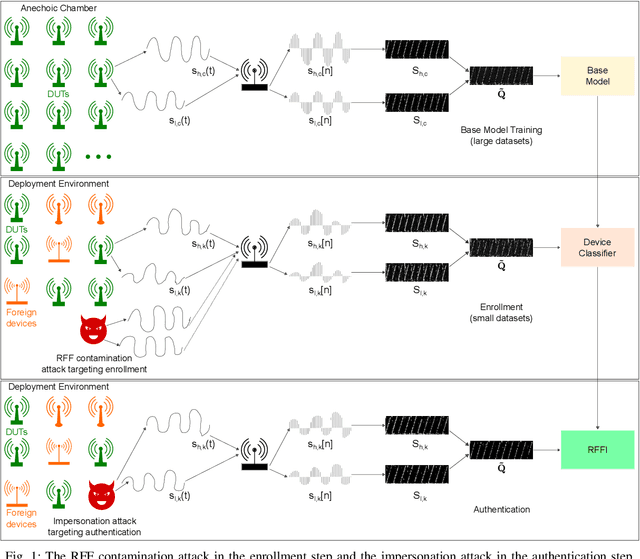Dhammika Jayalath
Efficient Position Determination of Highly Directional RF Emitters via Iterated Beampattern Analysis
Nov 07, 2024Abstract:Received signal strength (RSS) information has seldom been incorporated in the direct position determination (DPD) method of passive radio emitter localization to date. Further, the common use of directional emitters modulates the RSS such that omnidirectional assumptions would dramatically decrease accuracy. This paper introduces a new DPD approach utilizing an RSS- enhanced adaptive beamforming method demonstrating on par or better than state-of-the-art performance at very low SNR for omnidirectional emitters. The technique is then applied to directional emitters taking the imposed RSS modulation into account using a beampattern library, significantly improving localization region confidence as compared to omnidirectional assumption approaches. This is the first approach to date in the open literature for localizing directional emitters.
Robustness and Security Enhancement of Radio Frequency Fingerprint Identification in Time-Varying Channels
Oct 10, 2024



Abstract:Radio frequency fingerprint identification (RFFI) is becoming increasingly popular, especially in applications with constrained power, such as the Internet of Things (IoT). Due to subtle manufacturing variations, wireless devices have unique radio frequency fingerprints (RFFs). These RFFs can be used with pattern recognition algorithms to classify wireless devices. However, Implementing reliable RFFI in time-varying channels is challenging because RFFs are often distorted by channel effects, reducing the classification accuracy. This paper introduces a new channel-robust RFF, and leverages transfer learning to enhance RFFI in the time-varying channels. Experimental results show that the proposed RFFI system achieved an average classification accuracy improvement of 33.3 % in indoor environments and 34.5 % in outdoor environments. This paper also analyzes the security of the proposed RFFI system to address the security flaw in formalized impersonation attacks. Since RFF collection is being carried out in uncontrolled deployment environments, RFFI systems can be targeted with false RFFs sent by rogue devices. The resulting classifiers may classify the rogue devices as legitimate, effectively replacing their true identities. To defend against impersonation attacks, a novel keyless countermeasure is proposed, which exploits the intrinsic output of the softmax function after classifier training without sacrificing the lightweight nature of RFFI. Experimental results demonstrate an average increase of 0.3 in the area under the receiver operating characteristic curve (AUC), with a 40.0 % improvement in attack detection rate in indoor and outdoor environments.
On the Use of Power Amplifier Nonlinearity Quotient to Improve Radio Frequency Fingerprint Identification in Time-Varying Channels
Feb 27, 2023Abstract:Radio frequency fingerprint identification (RFFI) is a lightweight device authentication technique particularly desirable for power-constrained devices, e.g., the Internet of things (IoT) devices. Similar to biometric fingerprinting, RFFI exploits the intrinsic and unique hardware impairments resulting from manufacturing, such as power amplifier (PA) nonlinearity, to develop methods for device detection and classification. Due to the nature of wireless transmission, received signals are volatile when communication environments change. The resulting radio frequency fingerprints (RFFs) are distorted, leading to low device detection and classification accuracy. We propose a PA nonlinearity quotient and transfer learning classifier to design the environment-robust RFFI method. Firstly, we formalized and demonstrated that the PA nonlinearity quotient is independent of environmental changes. Secondly, we implemented transfer learning on a base classifier generated by data collected in an anechoic chamber, further improving device authentication and reducing disk and memory storage requirements. Extensive experiments, including indoor and outdoor settings, were carried out using LoRa devices. It is corroborated that the proposed PA nonlinearity quotient and transfer learning classifier significantly improved device detection and device classification accuracy. For example, the classification accuracy was improved by 33.3% and 34.5% under indoor and outdoor settings, respectively, compared to conventional deep learning and spectrogram-based classifiers.
 Add to Chrome
Add to Chrome Add to Firefox
Add to Firefox Add to Edge
Add to Edge